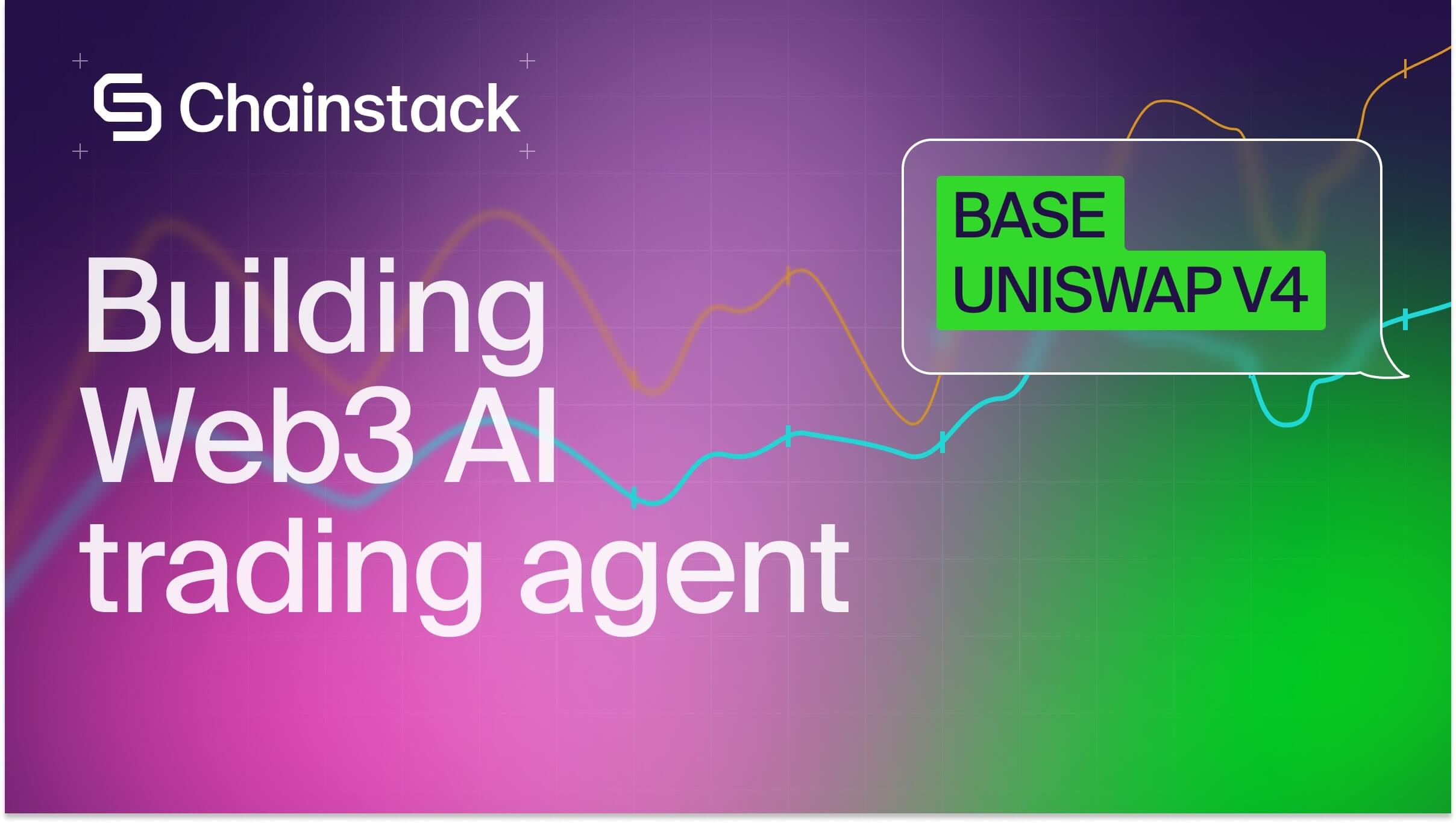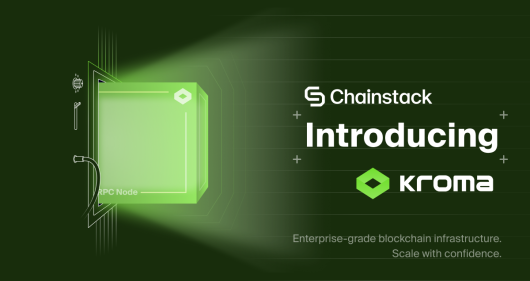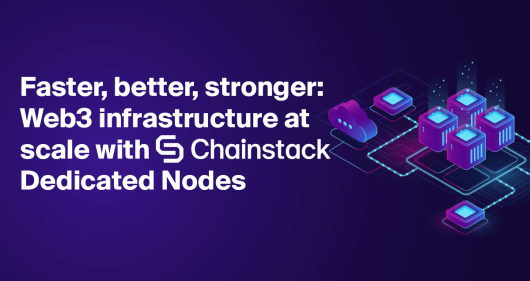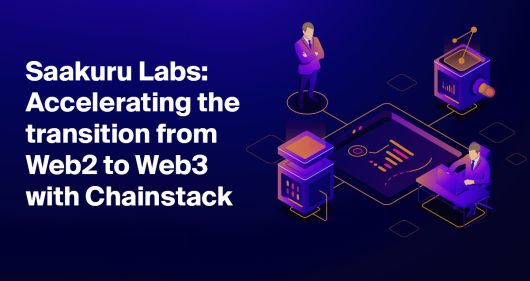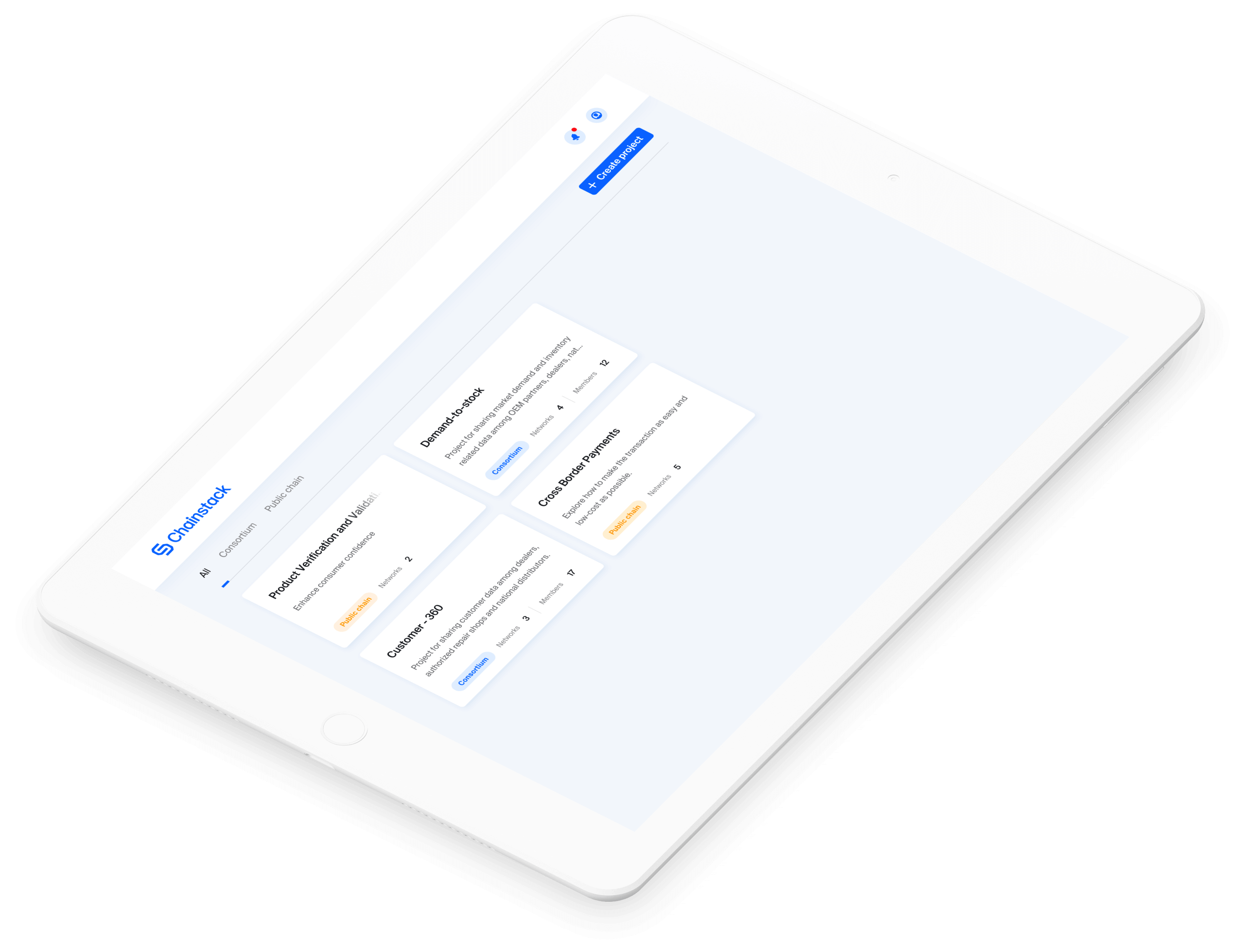Top Ethereum RPC providers for 2025
Ethereum keeps scaling, and so does the list of RPC providers powering it. We tested and compared the major ones to see who delivers the best performance, speed, and uptime to help you pick the right one.
Ethereum processes roughly 1.7 million transactions a day, powering everything from smart contracts and rollups to trading bots. It’s also the most developer-heavy chain in Web3 and the one where majority of the value moves and settles. With that kind of activity, you get more builders shipping on-chain and more RPC providers competing to support them.
With so many providers in play, a lot of your infrastructure choices come down to how you connect to the chain. Every project optimizes for something different: low latency, cost-effectiveness, or developer tooling. To make that choice easier, we compared the top Ethereum RPC providers on speed, uptime, pricing, and developer experience.
Let’s get into it.
Comparison of the best Ethereum RPC providers
What separates one RPC provider from another usually comes down to the same few metrics: pricing, latency, uptime, and developer tools available. Here’s how the leading Ethereum options measure up:
| # | Provider | Free plan | Paid plans & pricing | Latency & uptime | Developer Experience |
| 1 | Chainstack | 3M requests/mo, 25 RPS | Starting from 250 RPS and scaling beyond 600 RPS on custom Enterprise plans, with an Unlimited Node add-on for unmetered requests at a flat monthly rate | Low latency global routing with 99.99%+ uptime | Docs, dashboard metrics, testnet faucets (Sepolia/Holesky/Hoodi), archive, Access rules |
| 2 | Alchemy | 30M CUs/mo; up to 25 RPS | Pay-as-you-go or monthly; higher CU throughput on paid plans | Low latency routing, uptime available on higher tiers | Transact & Notify APIs, analytics, SDK support |
| 3 | QuickNode | No free tier; 10M credits trial only | 50–500 RPS; credit-based (method-weighted) monthly plans | Globally distributed, 99.99% uptime on paid tiers | Streams, Webhooks, team dashboards, multi-region setup |
| 4 | Ankr | 200M credits/month, ~30 RPS | Pay-as-you-go ($10 per 100M credits), goes up to up to 15,000 RPS. | GEO-distributed network, 99.99% SLA on Enterprise tiers | Simple dashboard, multi-chain support, HTTPS & WebSocket, archive available |
| 5 | dRPC | 210M CUs/mo (~10M calls), ~100–250 RPS | $6 per 1M requests (pay-as-you-go), up to 5,000 RPS; Enterprise custom beyond that | Latency-aware routing, 99.99% uptime on paid plans | Unlimited keys on paid plans; trace/debug locked on free |
| 6 | Getblock | 50k req/day (~1.5M /mo), 20 RPS | $39 for 50M (100 RPS); $399 for 600M (500 RPS); Dedicated from $1000 no cap | Regional nodes, 99% shared / 99.99% dedicated uptime | Basic dashboard, regional choice, easy setup |
| 7 | Infura | 3M credits/day (~depends on method), ~500 credits/sec | $50–$225/month for higher limits | Multi-region network, ~99.9% uptime | Ethereum-first with MetaMask integration, archive, debug/trace on paid tiers |
Chainstack
Chainstack is a multi-chain infrastructure platform offering one of the most complete ways to connect to Ethereum without the overhead. By choosing Chainstack Ethereum RPC node, you get secure HTTP and WebSocket access to Ethereum Mainnet, Sepolia, and Holesky, backed by 99.99%+ uptime and globally distributed routing for consistently low latency.
What makes it stand out is how much is available from the same console:
- Global Nodes for geo-balanced Ethereum RPC access.
- Dedicated Nodes for isolated performance and full control over node configuration.
- Archive nodes for deep historical reads, full historical blocks from the genesis to the latest one, debug and trace queries on the Ethereum blockchain.
- Access rules to manage allowed domains and IPs directly from the dashboard.
- Unlimited Node add-on for unlimited requests with flat monthly pricing, so you never have to worry about hitting plan limits.
- Testnet faucets for Sepolia, Holesky, and Hoodi are available.
All of this adds up to the Ethereum setup that covers nearly every use case. Whether you’re deploying contracts, building DeFi products, or streaming on-chain data, Chainstack gives you reliable performance, clear pricing, and infrastructure to scale with.
How much does Chainstack cost?
With Chainstack, you get clear pricing as each plan scales by request volume and requests per second (RPS), with transparent overage costs and an option to switch to an unmetered tier if you need flat pricing.
- Developer — free, 3M requests/month (~25 RPS), what is $2.5 per million requests.
- Growth — $49/month, 20M requests (~250 RPS), $15 per extra million.
- Pro — $199/month, 80M requests (~400 RPS), $12.5 per extra million.
- Business — $349/month, 140M requests (~600 RPS), $10 per extra million.
- Enterprise — from $990/month, 400M requests (custom RPS), extra from $5 per million.
- Unlimited Node Add-on — flat monthly rate for unmetered Ethereum RPC traffic, which works out to around $2.0 per million requests effectively.
- Dedicated Nodes — $0.50 / hour plus storage costs for exclusive, high-performance isolated Ethereum node instances, what means ~$0.25 per million requests effectively.
While others price in shifting compute units, Chainstack keeps it simple with request-based billing and clear RPS tiers, so you always know what you’ll pay. What’s more, on Chainstack, you are able to pay in crypto.
Performance on Ethereum with Chainstack
Chainstack’s performance sits well above what most providers offer at similar pricing, in terms of:
- Uptime: 99.99%+ availability backed by a multi-cloud network that reroutes automatically if a region drops. Public status page is also available.
- Latency: Choose endpoints in the US, EU, or APAC to keep response times tight.
- Throughput: Plans come with enough RPS capacity to absorb traffic surges without forcing you to throttle the app.
- Stability: Remains steady under load, including during network-wide surges.
- Monitoring: Built-in console metrics plus public performance/compare dashboards and a status page.
Pros & cons of Chainstack
| Pros | Cons |
| High throughput at price point (~250 RPS on Growth, ~600 RPS on Business) | Fixed RPS per tier; ultra-low-latency apps may need Dedicated Nodes |
| Predictable, request-based pricing with Unlimited Node add-on for flat, unmetered traffic within your chosen RPS tier | Free plan (3M calls, ~25 RPS) can be tight for bots or indexers |
| Built-in testnet faucets for Sepolia, Holesky, and Hoodi | Dedicated Nodes require at least a Pro plan |
| 99.99%+ uptime SLA, SOC 2 Type 1, globally distributed routing for low latency | |
| One provider for Ethereum plus 70+ other chains |
With Chainstack, you get the full stack: reliability, high RPS, global routing, and extras like Trader Nodes and archive access, all with pricing that’s clear and consistently better than most. From testing to scaling, the setup doesn’t change, and the costs stay predictable, making it one of the most dependable ways to run Ethereum at any stage.
Alchemy
Alchemy offers Ethereum RPC through its Supernode, giving developers access to mainnet and testnets over HTTP and WebSocket, along with extras like Notify, Transact, and Mempool.
On top, Alchemy supports dozens of networks, giving access to historical blockchain data, real-time event streaming, and built-in MEV protection on some chains. Backed by global infrastructure, Alchemy suits teams looking for additional APIs and monitoring tools.
How much does Alchemy cost?
Alchemy measures usage in compute units (CUs) rather than raw requests, which can make costs less predictable for teams sending large volumes of latency-sensitive calls compared to flat, request-based models.
Alchemy starts with a free tier offering 30M CUs per month, roughly equal to 1.2M basic requests up to 25 RPS. Paid plans scale by total CU usage:
- Pay-as-you-go — $5 per 11M CUs (~$0.45 per million).
- Enterprise — custom pricing with lower per-unit costs at high volumes.
Performance on Ethereum with Alchemy
Alchemy’s Supernode runs Ethereum data through layers of caching and routing to speed up delivery and reduce drop-offs during peak demand. It’s built for scale, but specific Ethereum-only benchmarks aren’t widely shared, so most performance insights come from user testing and published uptime stats.
- Uptime: Reports 99.9% historical uptime, but an uptime SLA is only guaranteed on Enterprise plans.
- Latency: Region-based routing helps keep response times low; however, Alchemy does not publish official Ethereum-specific latency numbers.
- Throughput: Begins at about 25 RPS on the free tier, with scaling up to 300 RPS on paid.
- Reliability: The Supernode setup helps maintain data accuracy during heavy traffic.
- Monitoring: You can check usage, errors, and request patterns through the dashboard in real time.
Pros & cons of Alchemy
| Pros | Cons |
| Covers Ethereum plus 40+ chains | CU pricing isn’t intuitive |
| Built-in MEV protection on supported networks | Hard to verify real performance without public benchmarks |
| Rich tooling | Throughput caps by plan, very high RPS needs enterprise plan |
Alchemy performs reliably under heavy load, and latency stays tight across regions. Its compute-based pricing gives you flexibility in how you use the service, but it also means your bill depends on call mix, not just volume, which can make it harder to model at scale. If you’re building with features like Notify or Mempool streaming, Alchemy is fine option, but less ideal if you want predictable scaling.
QuickNode
QuickNode runs a multi-region infrastructure for Ethereum RPC, letting you connect to mainnet and testnets like Sepolia and Holesky over HTTP or WebSocket. Archive support is available for teams that need to query deep historical data.
It also supports dozens of other chains and offers add-ons such as Webhooks and Streams if you want event-based triggers or real-time blockchain feeds. It’s popular with high-traffic teams because the network scales well under pressure, but to get to that performance you would need to move to the higher-priced tiers.
How much does QuickNode cost?
QuickNode doesn’t offer free plan, just a limited trial and uses a method-weighted, credit-based model. Because each Ethereum RPC method uses a different number of credits, your actual cost will depend on the method mix and how your traffic scales.
- Build — $49/month, 80M credits plus $0.62 per extra million, up to 50 RPS.
- Accelerate — $249/month, 450M credits plus $0.55 per extra million, up to 125 RPS.
- Scale — $499/month, 950M credits plus $0.53 per extra million, up to 250 RPS.
- Business — $999/month, 2B credits plus $0.50 per extra million, up to 500 RPS.
- Enterprise — custom terms for higher volumes and dedicated support. Credits rollover unused portions, which helps variable Ethereum loads, though the model adds a layer compared to straight request counts.
Performance on Ethereum with QuickNode
QuickNode runs a multi-region network tuned for low-latency Ethereum access. It has automatic failover built in, so requests continue without interruption when there’s a spike in activity.
- Uptime: Targets 99.99% availability on paid plans.
- Latency: Region-routed endpoints optimized for low latency; no official ms target published, so benchmark in your region.
- Throughput: Initial plans handle 15–25 RPS; advanced tiers scale well past 500 RPS.
- Reliability: Requests are rerouted automatically.
- Monitoring: The dashboard gives real-time visibility into request performance and errors.
Pros & cons of QuickNode
| Pros | Cons |
| Scales up to 500+ RPS on higher plans | Free trial caps at 15-25 RPS with only community support |
| Archive data available (by chain/plan). | Method-weighted, credit-based billing makes costs less predictable |
| Low latency from multi-region routing | No flat-rate unlimited option for heavy workloads |
QuickNode gives you speed, global routing, and developer tooling, which makes it good option for Ethereum apps. The main limitation is its credit-based (method-weighted) pricing. Because different methods burn credits at different rates, long-term cost planning takes more effort, especially if your workload isn’t static.
Ankr
Ankr provides Ethereum RPC through a globally distributed network of node operators, routing traffic across regions to keep latency low and reduce reliance on any single infrastructure provider. You can connect to Ethereum mainnet and testnets like Sepolia via HTTPS or WebSocket, with more than 30 regions in rotation and archive access available for historical queries and tracing
It’s a solid option for teams that prefer a pay-as-you-go model and want to tap into a decentralized setup, though it skips some of the advanced tooling and analytics you’d find in larger, more centralized providers.
How much does Ankr cost?
Ankr uses an API credits model where credit cost varies by method (heavier calls cost more). Pricing is pegged at $0.10 = 1M API credits (PAYG), and there’s a freemium tier. It’s enough for testing, but high-traffic apps will hit the ceiling quickly.
Their paid plans use a pay-as-you-go model:
- Premium — $10 per 100M credits (~500K requests), with up to 1,500 RPS.
- Enterprise — from $1,000/month, 15,000 RPS, dedicated endpoints, and priority support.
Performance on Ethereum with Ankr
Ankr uses a decentralized fleet of nodes across more than 30 regions, which helps keep response times low by routing calls to the closest available endpoint. Because the network isn’t run by a single operator, latency stays competitive, though you may notice small variations in block timing across regions.
- Uptime: Claims up to 99.99%.
- Latency: Region-routed.
- Throughput: 30 RPS on free; ~1.5K–15K RPS on paid tiers.
- Reliability: Distributed design reduces single-point failures but outages can still occur.
- Monitoring: The console shows usage and request stats, with more advanced visibility once you move to a paid.
Pros & cons of Ankr
| Pros | Cons |
| Freemium with 200M credits/month | Advanced visibility/support gated to paid |
| Supports HTTP, WebSocket, and archive queries | No fixed monthly plans |
| Multi-chain support | Fewer built-in analytics |
If you don’t mind variable performance across regions, Ankr could be a way to go when testing or for the smaller projects. Yet, if you need need steady throughput and predictable billing, platforms with fixed RPS tiers and dedicated routing tend to offer a more stable path for production workloads.
dRPC
dRPC runs a decentralized RPC network for Ethereum by aggregating independent third-party node operators and public nodes and routing traffic automatically. It provides HTTP and WebSocket access to the Ethereum mainnet and testnets like Sepolia and Holesky, with nodes across the US, Europe, and APAC for low-latency delivery.
The setup offers an alternative path for teams that want a distributed routing model. Yet, since it’s still early in adoption, it’s still building a track record for handling continuous, high-load workloads.
How much does dRPC cost?
dRPC uses a pay-as-you-go model priced in compute units (CUs). A basic Ethereum RPC call costs 20 CUs.
- Free tier — 210M CUs per month (~10–12M Ethereum requests), up to ~100 RPS with bursts when available. Trace and debug methods are restricted, and only shared nodes are used.
- Growth (pay-as-you-go) — $6 per 1M requests, with up to 5,000 RPS across distributed node operators. Archive access is included at the same rate.
- Enterprise — custom plans offering unlimited RPS, priority routing, and 99.99% uptime guarantees.
Unlike providers such as Chainstack, dRPC does not offer an unlimited request plan as a standard tier, so usage is always metered outside its custom Enterprise options.
Performance on Ethereum with dRPC
As mentioned, dRPC runs a decentralized network spanning the US, Europe, and APAC, routing every Ethereum request to the nearest low-latency node.
- Uptime: 99.99% guarantee on paid plans.
- Latency: Maintains low response time across most regions.
- Throughput: 100 RPS on free, goes up to 5K RPS on paid plans.
- Reliability: Works well because of distributed network, but on shared it varies.
- Monitoring: Real-time analytics are only included once you move to a paid plan.
Pros & cons of dRPC
| Pros | Cons |
| Traffic is routed to the lowest-latency node automatically, improving responsiveness during peak activity | Trace and debug methods are not available on the free tier |
| Decentralized infrastructure helps prevent total service outages | No flat-rate option |
| Paid plans come with unlimited keys, crypto payments, and MEV-safe endpoints | Performance on the free plan depends |
With dRPC, you get reliable latency and smart routing, yet you also get cons as pricing that scales with usage and shared node performance, which isn’t always steady. Thus, for projects needing guaranteed throughput or predictable monthly pricing, it may not be the best infra fit.
GetBlock
GetBlock provides Ethereum RPC access on mainnet and testnets like Sepolia over HTTP and WebSocket, with the option to choose regions such as New York, Frankfurt, or Singapore to improve latency. Developers can use shared endpoints to get started quickly or switch to dedicated nodes when they need higher uptime guarantees, archive access, or more consistent performance under load.
While it skips the advanced APIs and deep analytics of bigger platforms, GetBlock remains a good option for teams that prioritize simplicity, regional control, and predictable access to Ethereum infrastructure.
How much does GetBlock cost?
GetBlock utilizes a monthly quota system, with free plan limits resetting daily and paid tiers allowing you to roll over any unused requests. Yet, the RPS rates are hard-capped, which can hold back high-traffic applications.
- Free Tier — 50k CU per day, 20 RPS.
- Start (Shared) — $39/month, 50M CU/month, 100 RPS.
- Advanced (Shared) — $159/month, 220M CU/month, 300 RPS.
- Pro (Shared) — $399/month, 600M CU/month, 500 RPS.
- Enterprise (Shared) — from $799/month, custom CU/RPS and features.
Performance on Ethereum with GetBlock
For Ethereum specifically, GetBlock covers both mainnet and testnets and lets you pick your region to keep latency low. It works well for smaller deployments or teams testing new dApps, but scaling up means paying close attention to the limits.
- Uptime: 99% on shared plans, 99.99% on dedicated.
- Latency: Region-pinned routing for lower RTT.
- Throughput: 20 RPS on free, 100 RPS on Start, 500 RPS on Pro, unlimited on Dedicated.
- Reliability: Shared nodes work well for low-volume usage, but performance can vary when load increases.
- Monitoring: Basic dashboard is available but deeper analytics are only unlocked on higher tiers.
Pros & cons of GetBlock
| Pros | Cons |
| Dedicated nodes offer unlimited requests and 99.99% uptime | Free tier is capped at 20 RPS |
| Regional deployment helps reduce latency by placing nodes closer to end users | Strict RPS ceilings on shared plans |
| Setup is quick | Monitoring features are limited compared to other infra providers |
GetBlock works well for early-stage testing or smaller workloads. However, as demand increases, throughput caps can limit you, and basic options for monitoring will make it harder to manage growth or troubleshoot performance issues at scale.GetBlock works well for early-stage testing or smaller workloads. However, as demand increases, throughput caps can limit you, and basic options for monitoring will make it harder to manage growth or troubleshoot performance issues at scale.
Infura
Infura provides Ethereum RPC access through infrastructure operated by ConsenSys, with direct integration into MetaMask for wallet connections. You get Ethereum mainnet and testnets like Sepolia via HTTPS and WebSocket, including archive data for historical queries. The service focuses on Ethereum-first support, with add-ons for Layer 2s (L2s) such as Polygon and Optimism.
Overall, it is a good fit for those who are focused on Ethereum first without needing chain variety.
How much does Infura cost?
Infura uses a credit-based model where each request consumes credits based on method complexity. This structure works for Ethereum-focused apps but demands monitoring to avoid caps on high-volume days.
- Core (Free) — 3M credits/day, 500 credits/sec.
- Developer — $50/month, 15M requests/day, 4K credits/sec.
- Team — $225/month, 75M requests/day, 40K credits/sec.
- Enterprise — custom.
Performance on Ethereum with Infura
Infura is built for Ethereum first, with the network is routed across multiple regions, which keeps requests stable. While it doesn’t publish detailed latency benchmarks, but its long-time use across wallets and major dApps points to steady performance.
- Uptime: Minimum 99.9% uptime guarantee.
- Latency: No official ms target published.
- Throughput: Credit-per-second caps by plan, Effective RPS depends on method credit cost (see examples above).
- Reliability: Maintains performance during spikes.
- Monitoring: Dashboard with usage analytics and request visibility (24h on Free; up to 30 days on paid).
Pros & cons of Infura
| Pros | Cons |
| Built-in MetaMask integration | IPFS API/Gateway access requires pre-approval, not open for all users |
| Broad L2 coverage | Cost depends on method mix |
| Archive support and Debug/Trace on eligible plans | No public Ethereum-specific latency metrics |
Infura is a good choice for Ethereum-focused projects, especially those that rely on MetaMask and is consistent and easy to integrate. The main drawback is its credit-based structure (and IPFS access gating), which introduces limits and variable costs as usage grows. For teams that are comfortable with those trade-offs, it would be a good pick.
How to connect to Ethereum RPC
When you start building on Ethereum, the provider you choose shapes your baseline for speed, reliability, and how easily you can scale over time. While different platforms cater to different use cases, Chainstack bundles the full stack into a setup that takes minutes to deploy:
- Log in to your Chainstack account (or create one if you don’t have it yet).
- Create a new project or select an existing one.
- Choose Ethereum, then pick mainnet or a testnet like Sepolia or Holesky.
- Deploy a node with RPC access and copy the HTTP or WebSocket endpoint into your app.
Not only do you get the option to choose between Global Nodes for shared, geo-balanced access or Dedicated Nodes for isolated performance and full control, but every deployment comes production-ready. Both options include Bolt fast sync for same-day readiness and GraphQL support.
You also get built-in security through Access rules, plus testnet faucets and MEV protection enabled by default. Everything required to connect, build, and ship on Ethereum is available in one place.
Wrapping up
Ethereum remains the chain with the highest level of developer activity in Web3 and the largest share of value moving on-chain. When a network operates at that scale, the infrastructure you build on needs to match it with reliability, low latency, and the flexibility to scale.
Every provider in this list has strengths, but if you’re looking for predictable performance, global coverage, and production-ready tooling from day one, Chainstack is the provider designed for that. You get a full range of node options, from Global to Dedicated Nodes, along with built-in MEV protection and flat pricing that stays consistent as your usage grows. It gives you everything required to build, test, and scale on Ethereum.
Power-boost your project on Chainstack
- Discover how you can save thousands in infra costs every month with our unbeatable pricing on the most complete Web3 development platform.
- Input your workload and see how affordable Chainstack is compared to other RPC providers.
- Connect to Ethereum, Solana, BNB Smart Chain, Polygon, Arbitrum, Base, Optimism, Avalanche, TON, Ronin, Plasma, Hyperliquid, Scroll, Aptos, Fantom, Cronos, Gnosis Chain, Klaytn, Moonbeam, Celo, Aurora, Oasis Sapphire, Polygon zkEVM, and Bitcoin mainnet or testnets through an interface designed to help you get the job done.
- Fast access to blockchain archive data and gRPC streaming on Solana.
- To learn more about Chainstack, visit our Developer Portal or join our Telegram group.
- Are you in need of testnet tokens? Request some from our faucets. Sepolia faucet, Hoodi faucet, BNB faucet, zkSync faucet, Scroll faucet, Hyperliquid faucet.
Have you already explored what you can achieve with Chainstack? Get started for free today.
FAQ
Ethereum RPC (Remote Procedure Call) is the interface that lets your application communicate with the Ethereum blockchain. Through an Ethereum RPC node provider, you can read blockchain data, send transactions, deploy smart contracts, and interact with dApps using standard JSON-RPC API calls.
It depends on what you prioritize: performance, pricing, or developer tooling. Chainstack is widely preferred for production use because it combines predictable pricing, high RPS capacity, global routing, and both free and enterprise-grade Ethereum RPC options.
Yes. Chainstack offers a free Ethereum RPC tier with millions of monthly calls, full mainnet and testnet access, and support for archive data. It’s one of the most generous free ETH RPC plans suitable for real development, not just trial use.
You simply copy the RPC URL from your provider and use it in your code. If you’re using Chainstack, you can deploy a node in a few clicks and instantly receive your Ethereum RPC endpoint for mainnet, Sepolia, or Holesky.
Create an account with an Ethereum RPC node provider like Chainstack, select Ethereum as your network, and deploy a node or endpoint. The platform will generate both HTTP and WebSocket URLs that you can plug into your application or wallet.
You can connect by using an Ethereum RPC URL from a provider and pasting it into your Web3 client or wallet settings. With Chainstack, you choose Ethereum mainnet during setup, deploy your node, and get your RPC URL instantly.
 Ethereum
Ethereum Solana
Solana Hyperliquid
Hyperliquid Base
Base BNB Smart Chain
BNB Smart Chain Monad
Monad Aptos
Aptos TRON
TRON Ronin
Ronin zkSync Era
zkSync Era Sonic
Sonic Polygon
Polygon Unichain
Unichain Gnosis Chain
Gnosis Chain Sui
Sui Avalanche Subnets
Avalanche Subnets Polygon CDK
Polygon CDK Starknet Appchains
Starknet Appchains zkSync Hyperchains
zkSync Hyperchains











